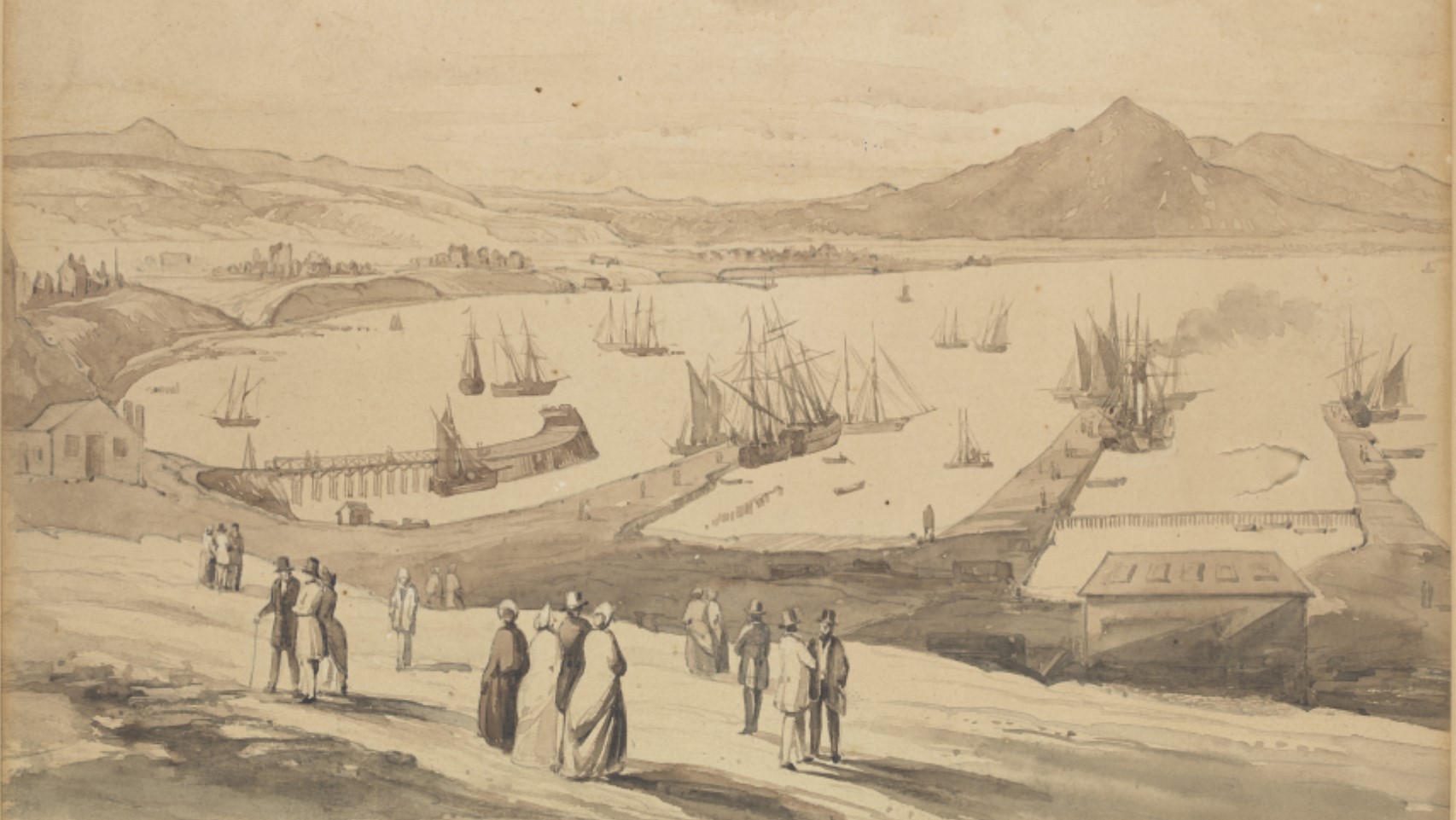
Corio Bay has often been a much-maligned resource. These days the jewel of Jillong, the shallow waters and their warming northerly aspect were for many years a dumping ground for detritus of every description – even while, at the same time, an important and well-frequented place of work, industry, enterprise and recreation.
Author Peter Carey, an old Geelong Grammarian, declared in his book Illywhacker that the city had turned its back on the bay with its woolstores backing onto the wharves and blocking views to the glistening harbour.
The sea baths, rowing clubs, yacht clubs and fishing vessels that have long occupied the bay offer a fairly solid counterpoint to any lack of actual engagement but it’s fair to say the pollution and trenchant misuse of the bay and its shoreline attest to a massive level of neglect down the years.
For many years, the idea of eating fish snared in the bay was anathema to locals, for fear of ingesting the chemicals, toxins and wastes pumped or dumped by factories, stormwaters, saleyards and offensive industries directly into the water.
Rippleside was until recent years one of the worst polluted beaches in the whole of Port Phillip Bay. Clean-up-the-bay days retrieved appalling amounts of rubbish. The old gun club at Eastern Park deposited mega-loads of black traps into the water. Asbestos might still be found in cliffs along the northern industrial reaches of the bay.
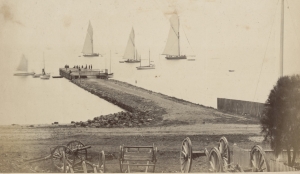
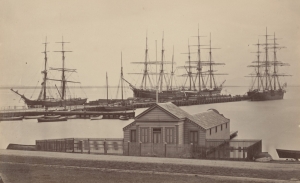
For all that, and plenty more, the bay has been an article of pride for Geelong. It’s been featured in paintings and photographs as far back as white settlement. You’ll indigenous folks camped above the bay in Mosman’s 1840 sketch of the town and along Western Beach’s Esplanade in Liardet’s 1848 painting.
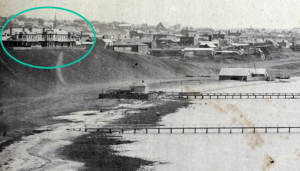
The ill-fated luxury Singapore Terrace (above) at Eastern Beach occupied the best vantage point above the bay before catching fire in 1862. Bathing pools on long timber jetties attracted swimmers for generations before being superseded by the art deco Eastern Beach enclosure. Even sharks liked the place, as the enclosure’s iron bars and at least one unhappy attack victim attest.
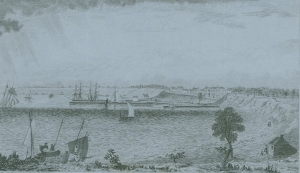
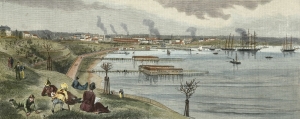
Artist Melton Prior’s striking c1886 image of Geelong (above) features the bay in all its lithographic glory. Victoria’s most important colonial artist, S.T. Gill, recorded several images of Geelong with Corio Bay dominant in the landscape.
For sheer black and white finesse, it is hard to go past the Corio Bay images recorded by 19th century photographer Fred Kruger.
The Yarra Street wharves and Stony Pier with their large and small craft, Gheringhap and side-streets with their dusty paths, foundries, houses, hotels and early woolstores looking out to the You Yangs, a stunning bird’s-eye vista of the rail and roads links north of town and the timber, brick, slate and verandas of a vernacular architecture treasure trove.
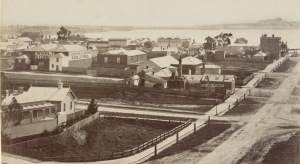
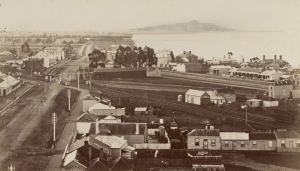
One of my favourites, however, is a waterfront scene dated to 1850 and featuring a rather salubrious group of gentlemen ambulating about armed with top hats, tails and walking sticks, and women in prim bonnets, shawls and crinolines.
The wharves are a small forest of masts and sails, rickety jetties, rude shacks and unsealed dirt paths. The cliffs of a partially-housed Western Beach fall away sharply to the sea below, Green Gully is easily discernible, while the distant hills of Anakie and Little River’s You Yangs are exaggerated into a mountainous horizon.
The artist is unnamed by the State Library of Victoria, and presumably unknown. The sepia watercolour, on cream paper, is reminiscent of the artistic style adopted by Charles Latrobe, first lieutenant-governor of Victoria.
Latrobe maintained a keen interest in Geelong and, among other things, the curiously warded Geelong Keys unearthed on Corio Bay’s foreshore that many people believed pointed to the discovery of Australia’s east coast several centuries earlier.
And oddly enough, which led to the hairy Peruvian sculptures you can find on the Corio Bay foreshore opposite Deakin Uni immortalised in author-artist Robert Ingpen’s Poppykettle stories. Things you can find you go beachcombing.
This article appeared in the Geelong Advertiser14 July 2025


